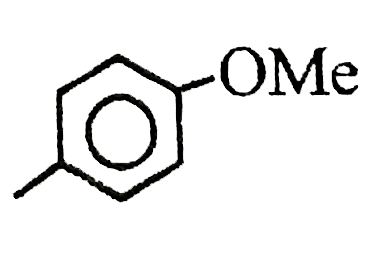Statement-I: Reduction potential value (E∘) of o-benzoquine  (I) is greater than p- benzoquinone
(I) is greater than p- benzoquinone 
Statement-II: Two adjacent (C=O) group in (I) destabilse (I) relative to (II).
If both statement-I & statement-II are true & the statement-II is a correct explanation of the statement-I
if both statement-I & statement-II are true but statement-II is not a correct explanation of the statement-I
If statement-I is true but the statement-II is false.
If statement-I is false but the statement-II is true.
The correct Answer is:A
Topper's Solved these Questions
- ALCOHOL, ETHERS & PHENOL, OXIDATION & REDUCTION BOOK - BANSALCHAPTER - ALCOHOL, ETHERS & PHENOL, OXIDATION & REDUCTION EXERCISE - Exercise 3
28 Videos
- ALCOHOL, ETHERS & PHENOL, OXIDATION & REDUCTION BOOK - BANSALCHAPTER - ALCOHOL, ETHERS & PHENOL, OXIDATION & REDUCTION EXERCISE - Exercise 1
86 Videos
- CARBOXYLIC ACID DERIVATIVESBOOK - BANSALCHAPTER - CARBOXYLIC ACID DERIVATIVESEXERCISE - Exercise 3
23 Videos
Similar Questions
Knowledge Check
Assertion (A): Reduction potential value (E∘) of
o-benzoquine (I) is greater than p-benzouinone
(I) is greater than p-benzouinone  (II)
(II)

Q+2H⊕+2¯e→H2Q
Reason (R ): Two adjacent (C=O) groups in (I) destabilise (I) relative to (II).AIf both (A) and (R ) are true and (R ) is the correct explanation of (A).BIf both (A) and (R ) are true but (R ) is not the correct explanation of (A).CIf (A) is true but (R ) is false.DIf both (A) and (R ) are false.Statement-I : The ionisation potential of Sn is greater than Pb.
Statement-II : Usually ionisation energy decreases down the group.AIf both Statement-I & Statement-II are True & the Statement-II is a correct explanation of the Statement-I.BIf both Statement-I & Statement-II are True but Statement-II is not a correct explanation of the Statement-I.CIf Statement-I is True but the Statemet-II is FalseDIf Statement-I is False but the Statement-II is TrueStatement I: The size H− is greater than that of F−.
Statement II: The e/p ratio in H− is 2 while that in F− is 10/9AIf both Statement I and Statement II are true and Statement II is the correct explanation of Statement I.BIf both Statement I and Statement II are true but Statement II is not the correct explanation for Statement I.CIf Statement I is true but Statement II is false.DIf Statement I is false but Statement II is true.
Statement I: The IE1 of Pb is greater than that of Sn.
Statement II: The radius of Pb is greater than that of Sn.
View SolutionStatement I: The IE1 of Pb is greater than that of Sn.
Statement II: The radius of Pb is greater than that of Sn.
View SolutionStatement I: The IE1 of Pb is greater than that of Sn.
Statement II: The radius of Pb is greater than that of Sn.
View SolutionStatement-I:

Statement-II:Birch reduction is anti addition.
View SolutionStatement -I :

Statement-II : Migratory aptitute of group is greater than migratory aptitude of
group is greater than migratory aptitude of  group during cation rearrangments.
group during cation rearrangments.
View Solution
